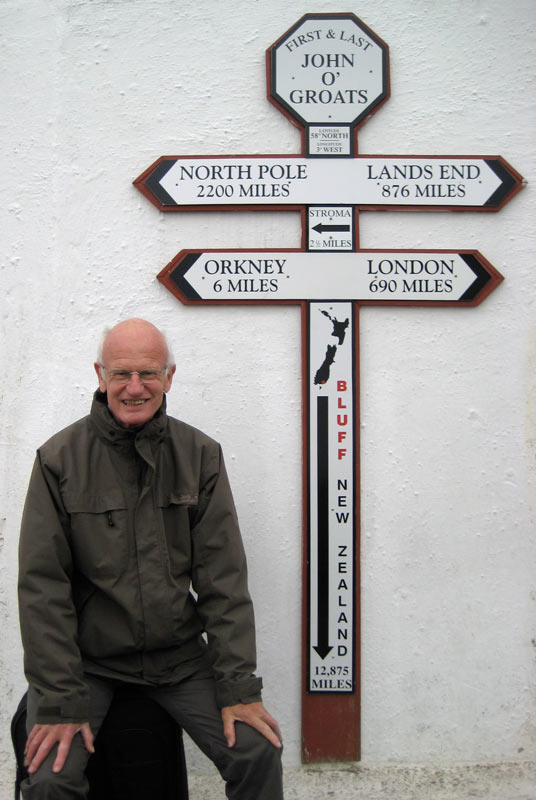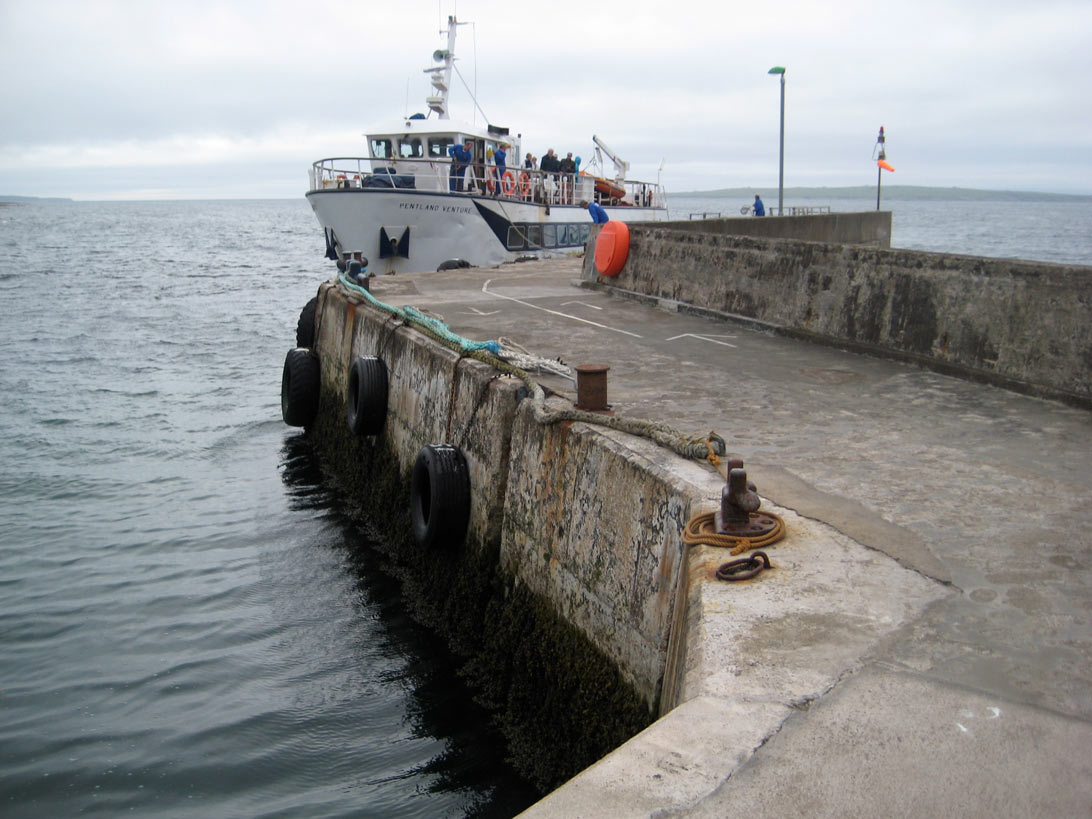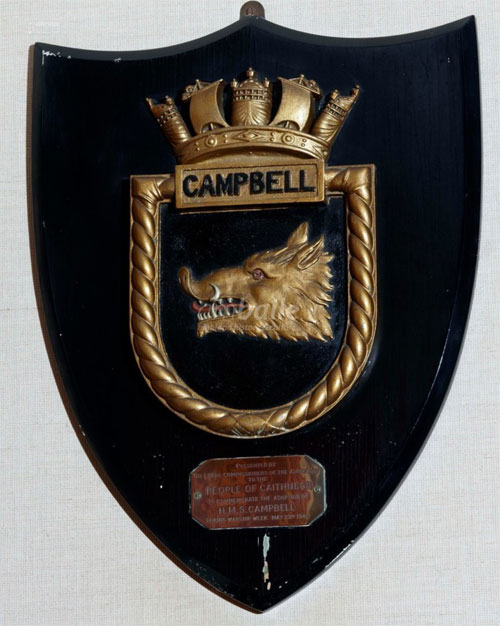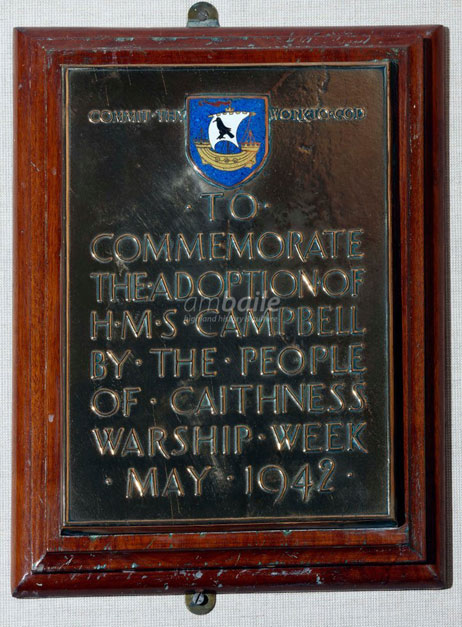Caithness is the most northern county in Scotland with John o' Groats at its north east corner. HMS
Campbell was adopted by Caithness in honour of
Major Jock Campbell VC MC (1894-1942)
of Thurso in Caithness who won his MC in World War 1 and the Victoria
Cross in World War 2 but was killed when his jeep overturned in
Egypt on 26 February 1942. HMS
Campbell was
larger than a standard V & W Class destroyer with the extras
facilities required by a Flotilla Leader. She was one of eight
Admiralty Class Flotiila Leaders with Scottish names, often referred to
as the "Scott Class", built by Cammel Laird at Birkenhead.
Wilkipdia provides a good overview of the history of HMS Campbell
which we hope to supplement by providing the families of the men who
served in her an opportunity to add their own personal stories of
family mermbers illustrated by photographs from their albums. Other
untold stories in the archives of the RNM at Portsmouth and the
Imperial War Museum in Lodon will also be added.
Capt Mark Pizey in HMS Campbell
(D60) was Captain (D) for the temporary Flotilla of V & W Class
destroyers in the 16DF and 21DF assembled at Harwich for Operation Fuller, the attack on
the German ships on their Channel Dash from Brest to the Ellbe through the Straits of Dover on 12 February 1942. His
report on Attempts to intercept German Battle Cruisers Gneisenau, Scharnhorst and Prinz Eugen (ADM 199/620) includes
the reports of the COs of the other five V & Ws which took part in
this heroic attempt to stop the Channel Dash by the German battle
cruisers.
The crude plans in Pizey's report
showing the track of the ships were redrawn and included in the
Bucknill Report into the failure to intercept and destroy the German
warships (ADM 2324/328) and published by the Admiralty as Number
11 in the Battle Summaries series of Naval Staff History – Second World
War (1943). It was controversial and was not released until 1947.
In May 1942 when Caithness held its Warshp Week and adopted
HMS Campbell she was escorting East Coast Convoys from Rosyth to the Thames Estuary. I am
hoping that a naval enthusiast or local historian in Caithness will
take up the challenge of researching her history from being
commissioned in 1918 to going to the breakers yard at Rosyth in 1947.
For further details
see the advice given here and
contact Bill Forster for more information.

 HMS CAMPBELL
HMS CAMPBELL
 HMS CAMPBELL
HMS CAMPBELL


